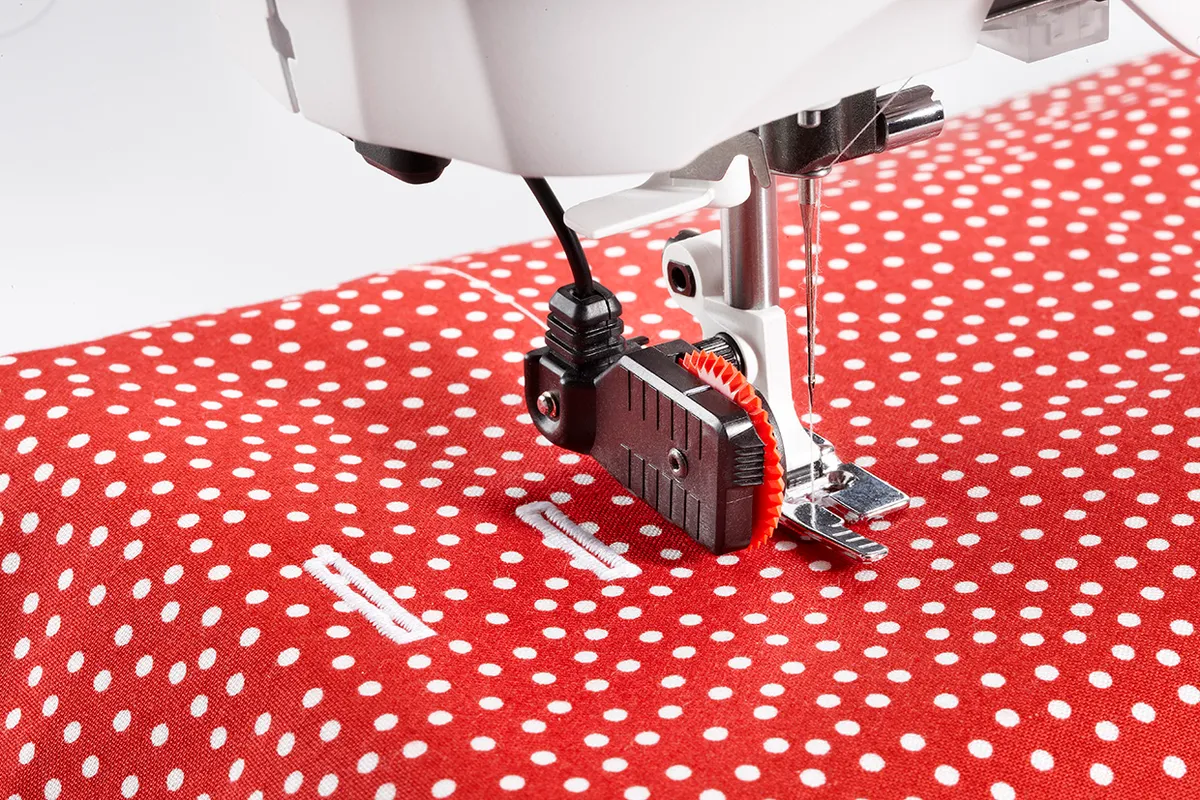Break your fast fashion addiction with these hacks and tips!
The importance of conversations around extending the lifespan of our garments cannot be overstated.
The growth in popularity of disciplines such as visible mending and refashioning within our sewing community is a testament to our growing collective awareness of this need, and our willingness to engage with solutions that address it.
But while disciplines such as these offer solutions post garment construction, there are also steps we can take as garment makers (before and during the construction process itself) to increase the potential life-span of our garments; keeping them in use and on our bodies long after we've tied off and buried that last thread tail.
The choices we make about things like materials, construction, fit and style can impact a garment's life span as much as what we do to maintain and care for it further down the line.
The late Vivienne Westwood encapsulated a neat philosophy for shopping consciously when she famously advised people to "Buy less. Choose well. Make it last."
There's an obvious takeaway here too, for those of us who make our clothes. We can make less, make it well, and make it to last. We can approach garment construction with a similarly neat and almost identical philosophy.
Choose well and make it to last
Clothes that are made to last, are clothes that we can continue to wear because they withstand repeated washing and wearing; and can adapt to our changing needs over time. We can bake these qualities into the clothes we make by making sound choices about how we make them.
If we think in terms of "future proofing" our projects, we can significantly contribute to reducing waste and increasing sustainability within our making practice. Here are some key ways you can futureproof your makes and keep them in circulation longer:
Choose the right materials
Begin with the highest quality fabrics and threads you can afford, that can withstand the regular wear and tear and the type of laundering that your lifestyle will expose them to.
Textiles already in circulation such as deadstock, destash sales and refashioning existing garments, are all preferable to consuming and creating demand for virgin resources, where possible.
Natural fibres and blends such as cotton, linen, Tencel and wool, launder well on a 30° cycle, and can withstand steam/high heat when pressing. Their breathability, moisture-wicking and temperature-regulating properties make them comfortable to wear and versatile across seasons. Those kind of clothes are the kind of clothes that we wear year after year.

Choose Natural Fibres
Natural fibres also take dye much more readily than synthetics, meaning you can refresh tired-looking garments periodically and with ease. Be sure to sew with a non-synthetic thread if you’re going to want the stitching to take dye later on too.
Before you do anything else, pre-wash new fabrics to prevent future shrinkage. Simple shapes with a loose or relaxed fit are futureproofing for a number of reasons.
Choose simple styles
Simple construction makes it easier to access seams for repair or adjustment as needed later on. These kinds of styles can also accommodate changes to body shape and size over time, meaning they can stay in rotation even as more fitted garments fall into disuse. They provide comfort and ease of movement, and we naturally reach for clothes with these qualities on a day-to-day basis.
Additionally, they can be easily layered, belted, tucked in or accessorised to create different looks, making them adaptable to various seasons and changing aesthetics. The simplicity of their design allows for easy pairing with other pieces, enhancing their overall versatility in styling. All of these characteristics make for staple pieces we'll reach for time and time again.

Take a tip from professional tailors
Aside from hemming and zip repair, one of the most common alterations asked for by consumers is for a garment to be taken in or let out. In tailoring, it’s commonplace to factor this in at the pattern-cutting stage, and additional seam allowance is often incorporated in strategic areas to allow for future adjustments.
These strategic additions to the SA provide tailors with the flexibility to make alterations without compromising the overall structure and integrity of the garment. It's a thoughtful practice that extends the life-span and adaptability of tailored pieces.
Consider building in a little extra seam allowance at the CB, CF, crotch, inseam and side seams of your more fitted makes, and "future you" may well thank you for your foresight.
Just a few millimetres can really add up when added or subtracted across all seams. It's possible to nudge a garment up or down a whole size this way.
There are also many design features that can be applied to a looser fitting garment to give it some adjustable shaping and fit (especially useful if you experience bloating or weight fluctuations).
Incorporating elastic components (bands or shirred panels) in strategic areas, such as the waist or cuffs, builds in stretch and adaptability, ensuring a comfortable fit for various body shapes.

Make them adjustable
Adjustable elements like drawstrings, ties, straps and buckles at key points offer the wearer the option to customise the look and fit by tightening or loosening as needed. These features can be used to modify both fit and length.
Use Reinforcements
Reinforce stress points like seams, pockets, and buttonholes by using interfacing, bias tape, or double stitching. This helps distribute tension and prevents fabric from fraying or tearing.
If these techniques are new to you, head over to our sewing for beginners guide, which covers all these skills and more.

Choose the right stitch
Use the appropriate stitching techniques for the fabric and the type of mechanical stresses your garment will be subject to. Flat fell seams on jeans are a good example of this, as is the stretch stitch used on knit fabrics. Seams prone to popping are not conducive to keeping a garment in use.
Hemming and Edging
Finish raw edges with suitable methods like serging, binding, or using pinking shears to prevent fraying. Hem garments with a double-folded hem or a blind hem for added strength and a polished look. We show you five ways to sew a hem.

Craft with intention
By incorporating these techniques into your garment-sewing projects, you'll find that you end up with clothes that just keep going, year after year. As home sewers, let's commit to shifting our focus from quantity to quality.
Choose fabrics that withstand time, designs that endure trends, and craftsmanship that speaks of patience and time invested. It's time to savour the joy of creating enduring pieces that transcend seasons.
Start today − craft with intention, create with purpose. Let's redefine the way we sew and make a lasting impact on our wardrobes and the planet. Let's sew for longevity, quality, and a better tomorrow. Let's make less, make it better, and make it last.
5 steps to slower fashion
Sarah Gane considers how small, everyday changes can work wonders for our wardrobe and the planet
Fast fashion is a little bit like social media, in some respects. You know you shouldn’t rely on it so much, but the thought of cutting it out completely feels… well, daunting. You’re not alone. The good news is we all have the power to make a difference.
As anyone who’s ever had a stone in their shoe will know: the little things matter. And these changes can start at home. Whether you’re a KonMari convert or not, having a thorough sort through all of your existing clothes and accessories can be good for the soul. In fact, the process encourages us to be present, thankful for what we’ve got and actually makes it easier to get dressed in the morning.
By looking after what we already own, through mending, upcycling or even just switching to a cooler washing machine cycle, we keep our most loved clothes out of landfill.
And by pressing pause on buying fast fashion, we can help the planet and save money too. We can chosoe to spend our hard-earned cash supporting secondhand businesses or investing in sustainable and ethical clothing companies that pay their employees a fair living wage.
Here are a few tips to help you get started…
Begin with your existing wardrobe
Clothing is the ultimate tool for self-expression, but it can also act as a form of self-care. We all deserve to wear things that fit and flatter us in this very moment, not at some point in the future.
Unsupportive and worn-out clothes or garments that pinch, squeeze and suffocate us can affect our mood, confidence and self-esteem over time. You wouldn’t choose to surround yourself with toxic people all day every day; it’s the same with our wardrobe.
With each item you own, ask yourself: Does it fit? Do I like it? Does it make me feel nice when I wear it? Separate everything into piles according to your answers: to keep; to mend; to give away.

Do a little mindful mending
Everyday wear on our favourite clothes is inevitable, but thankfully many of the most common problems can be fixed. Replacing buttons, de-bobbling jumpers or patching up holes require very few supplies to get started. Check out our mending clothes guide to find tutorials for all these techniques and more.
Not only is the process a wonderfully meditative one, but even doubling the useful life of an item of clothing from one year to two can reduce emissions over the year by 24%, according to Greenpeace.
If you’re keen on taking it a step further, visible mending is a brilliant way to celebrate a garment’s imperfections. Take a look at the amazing work by Katrina Rodabaugh (@KatrinaRodabaugh) and Jessica Marquez (@MiniatureRhino) if you need a bit of inspiration.
Try upcycling and refashioning
“There are literally no environmental, ethical or financial downsides to reusing old garments and textiles. It’s win-win all round,” says Refashioners’ founder, Portia Lawrie.
You can start simply too, as she explains: “Changing small details like the length of a sleeve or hem, or the shape or the taper of a trouser leg. Sometimes recutting the neckline on a top will totally change its look.”
Not sure where to begin? Visit Portia’s blog for ideas, sign up for a sewing class or even take a garment to an alterations specialist.

Look for sustainable choices
Thankfully, organic cotton is now making its way onto the high street, as is bamboo, but there are other sustainable textiles out there. Tencel is the brand name for Lyocell and Modal fabrics.
Lyocell is made from wood pulp; meanwhile, Modal is mainly made from beech wood. You can also buy Piña silk made from pineapple leaves or Abaca cloth, which is made from banana stalks and cotton.
If you’re buying garments off the shelf, don’t be afraid to ask #WhoMadeMyClothes for further insight on the company’s production processes, or read Fashion Revolution’s online annual report showing how your favourite high street brand fares.
Shop consciously
Avoiding the relentless, almost-weekly trends set by the high streets creates an all-round calmer shopping experience. Plus, by taking extra time to research the exact garment you want before buying – whether that’s how it’s made, the fit or even care instructions – you invest in the future… and yourself.
As the talented Anne Klein once said, “Clothes won’t change the world. The women who wear them will.”
Start your sustainable fashion journey
Discover how to bring your old clothes back to life with our tips and tutorials.









